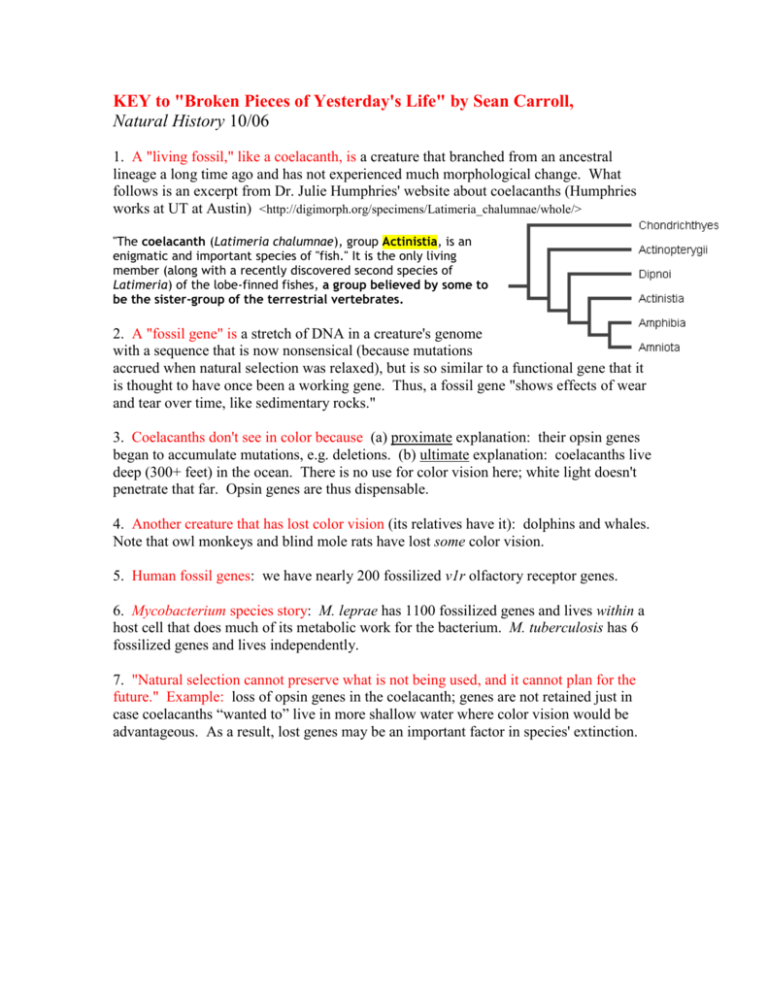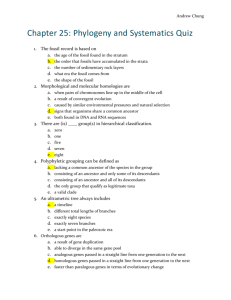BrokenPiecesRdgQsKEY
advertisement

KEY to "Broken Pieces of Yesterday's Life" by Sean Carroll, Natural History 10/06 1. A "living fossil," like a coelacanth, is a creature that branched from an ancestral lineage a long time ago and has not experienced much morphological change. What follows is an excerpt from Dr. Julie Humphries' website about coelacanths (Humphries works at UT at Austin) <http://digimorph.org/specimens/Latimeria_chalumnae/whole/> "The coelacanth (Latimeria chalumnae), group Actinistia, is an enigmatic and important species of "fish." It is the only living member (along with a recently discovered second species of Latimeria) of the lobe-finned fishes, a group believed by some to be the sister-group of the terrestrial vertebrates. 2. A "fossil gene" is a stretch of DNA in a creature's genome with a sequence that is now nonsensical (because mutations accrued when natural selection was relaxed), but is so similar to a functional gene that it is thought to have once been a working gene. Thus, a fossil gene "shows effects of wear and tear over time, like sedimentary rocks." 3. Coelacanths don't see in color because (a) proximate explanation: their opsin genes began to accumulate mutations, e.g. deletions. (b) ultimate explanation: coelacanths live deep (300+ feet) in the ocean. There is no use for color vision here; white light doesn't penetrate that far. Opsin genes are thus dispensable. 4. Another creature that has lost color vision (its relatives have it): dolphins and whales. Note that owl monkeys and blind mole rats have lost some color vision. 5. Human fossil genes: we have nearly 200 fossilized v1r olfactory receptor genes. 6. Mycobacterium species story: M. leprae has 1100 fossilized genes and lives within a host cell that does much of its metabolic work for the bacterium. M. tuberculosis has 6 fossilized genes and lives independently. 7. "Natural selection cannot preserve what is not being used, and it cannot plan for the future." Example: loss of opsin genes in the coelacanth; genes are not retained just in case coelacanths “wanted to” live in more shallow water where color vision would be advantageous. As a result, lost genes may be an important factor in species' extinction.





